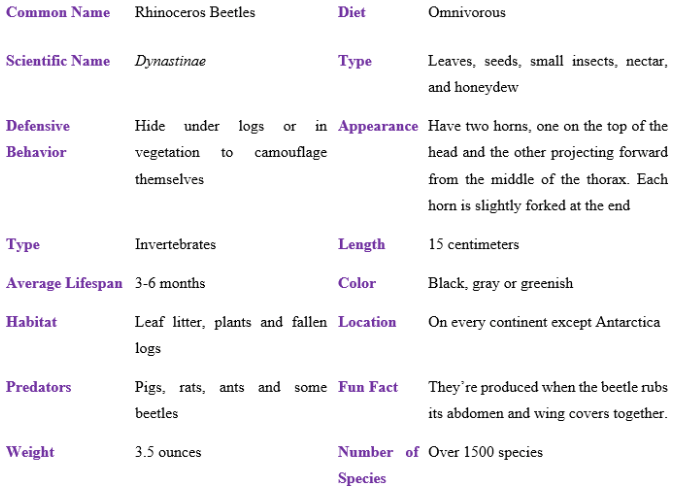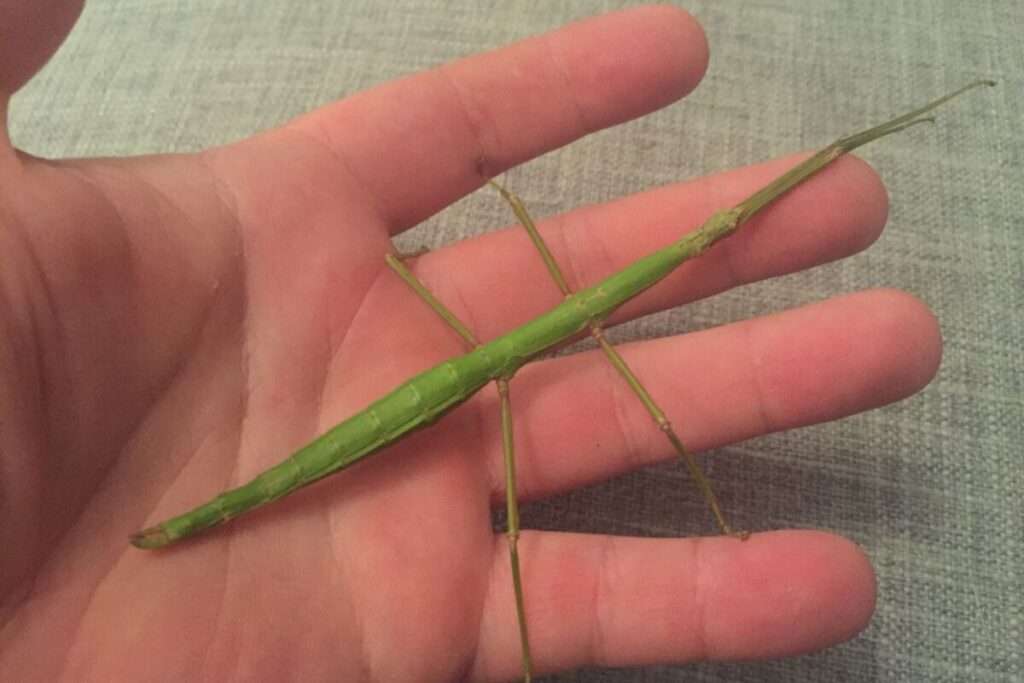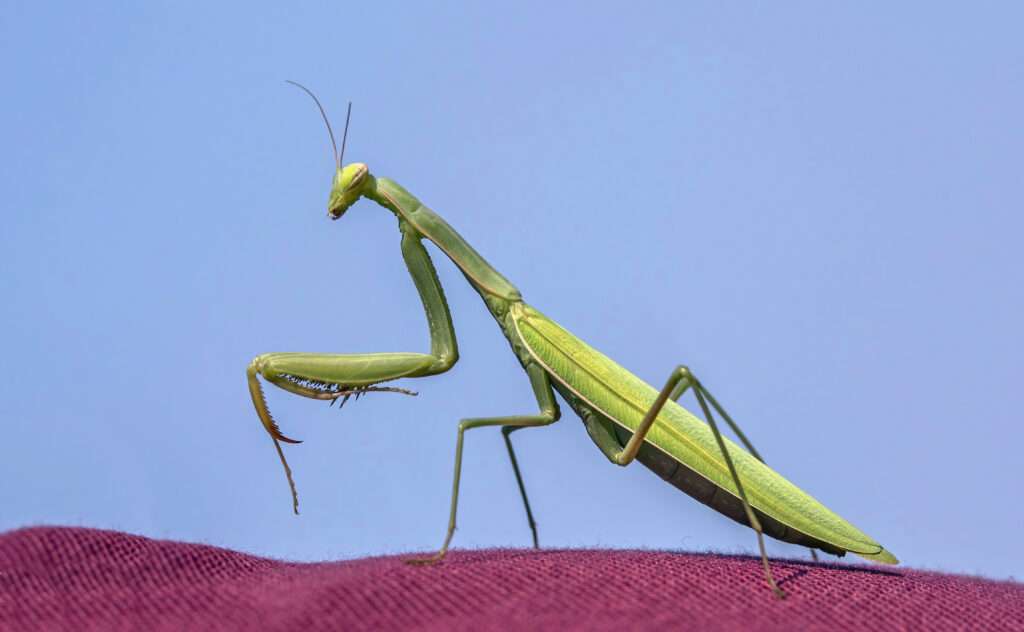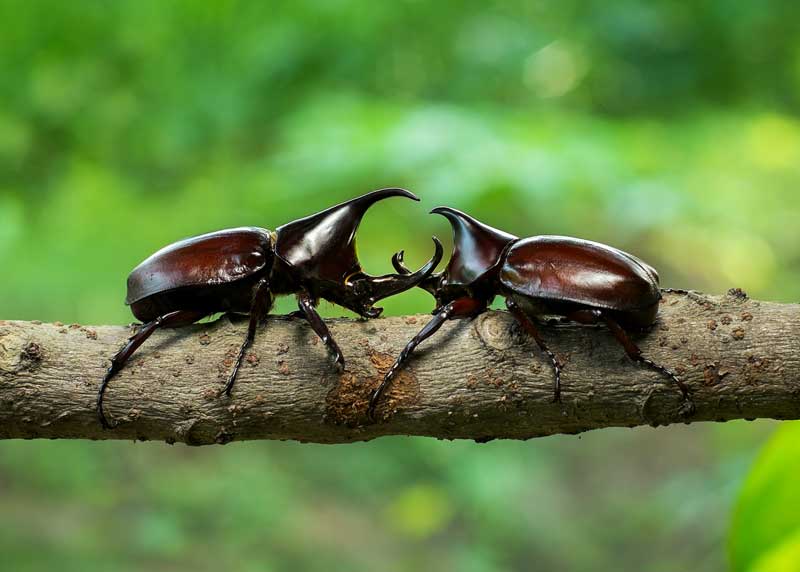
The name for their family is called Dynastinae, or rhinoceros beetles (Scarabaeidae). There are 225 genera and more than 1500 species of rhinoceros beetles. Numerous rhinoceros beetles are renowned for their distinctive forms and enormous sizes.
Exoskeleton
Herbivorous rhinoceros beetles get their name from the horn-like protrusion on and near the males’ heads. The majority are colored black, gray, or greenish, and some have soft hairs on them. Some of these insects are also referred to as “Hercules beetles” because of their enormous strength. Rhinoceros beetles are among the world’s largest insects, with a maximum length of six inches (15 cm).
Head
Each has a horn on the top of its head and a second horn that protrudes forward from the middle of its thorax. The horns are utilized for digging and for battling other males during mating season. A reliable predictor of dietary and physical health is the size of the horn.
Exoskeleton
An exoskeleton that is quite thick covers the body of an adult rhinoceros beetle.
Wings
The rhinoceros beetle can fly, though not very well due to its vast size, thanks to a pair of broad wings that are attached to another set of membranous wings that are located underneath. Their height and stature serve as the best defense against predators.
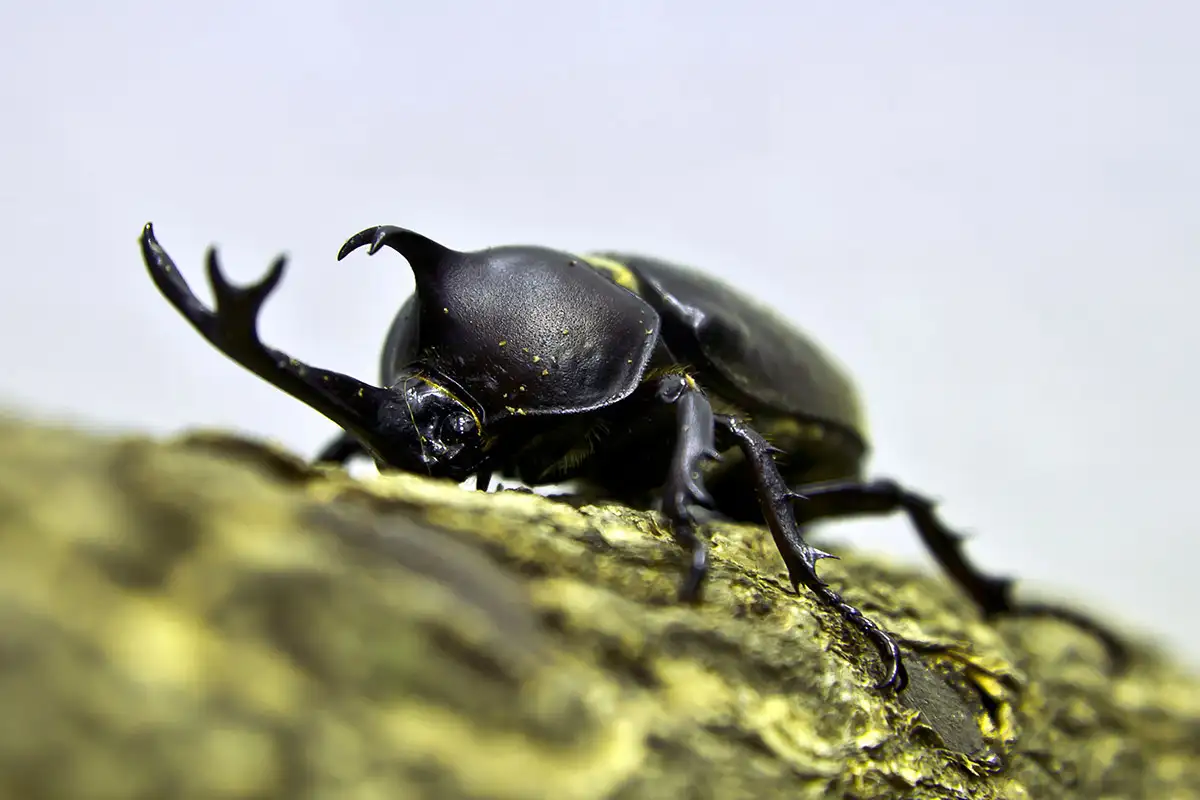
Habitat
Except for Antarctica, every continent has rhinoceros beetles. They reside in the southern region of the country, stretching from Arizona to Nebraska in the northeast and east. During the day, rhinoceros beetles can find refuge in fallen logs, plants, and leaf litter.
Diet
Herbivorous rhinoceros beetles are universal. Adults use fruit, nectar, and sap as food. Larvae consume decomposing plant debris.
Reproduction
They also stay away from many of their predators during the day because they are nocturnal. They conceal themselves in vegetation or under logs while the sun is out to avoid being seen by the few predators that are large enough to desire to eat them. Some rhinoceros beetles have the ability to hiss loudly and angrily when provoked. A healthy adult male rhinoceros beetle can survive for two to three years. They are comparatively hardy insects. Rarely do the females survive long after mating. The larval stages of these beetles can last for several years. The adults consume nectar, plant sap, and fruit, while the larvae consume decaying wood. Before becoming adults, the larvae must first emerge from the eggs where they were first laid.
Conditions to Keep as Pet
- Because rhino beetles are nocturnal creatures, no special heating or lighting is needed. To establish a natural photoperiod, it is recommended that natural light reach the room where animals are housed.
- For most species, temperatures should be kept between 20 and 25 °C. Rhino Beetles normally bury themselves into the cool ground to avoid the heat, therefore using heat mats will just cause the substrate to become desiccated.
- The humidity must be kept between 70 and 80 percent, but keep in mind that you want to maintain a damp but not soggy substrate.
- Adult rhino beetles can be kept alone, in pairs, or in sexed groups in suitable plastic or glass terrariums.
Species
Some well-known species are the Atlas beetle (Chalcosoma atlas), the common rhinoceros beetle (Xylotrupes ulysses), the elephant beetle (Megasoma elephas), the European rhinoceros beetle (Oryctes nasicornis), the Hercules beetle (Dynastes hercules), the Japanese rhinoceros beetle or (Dynastes tityus).
Table
